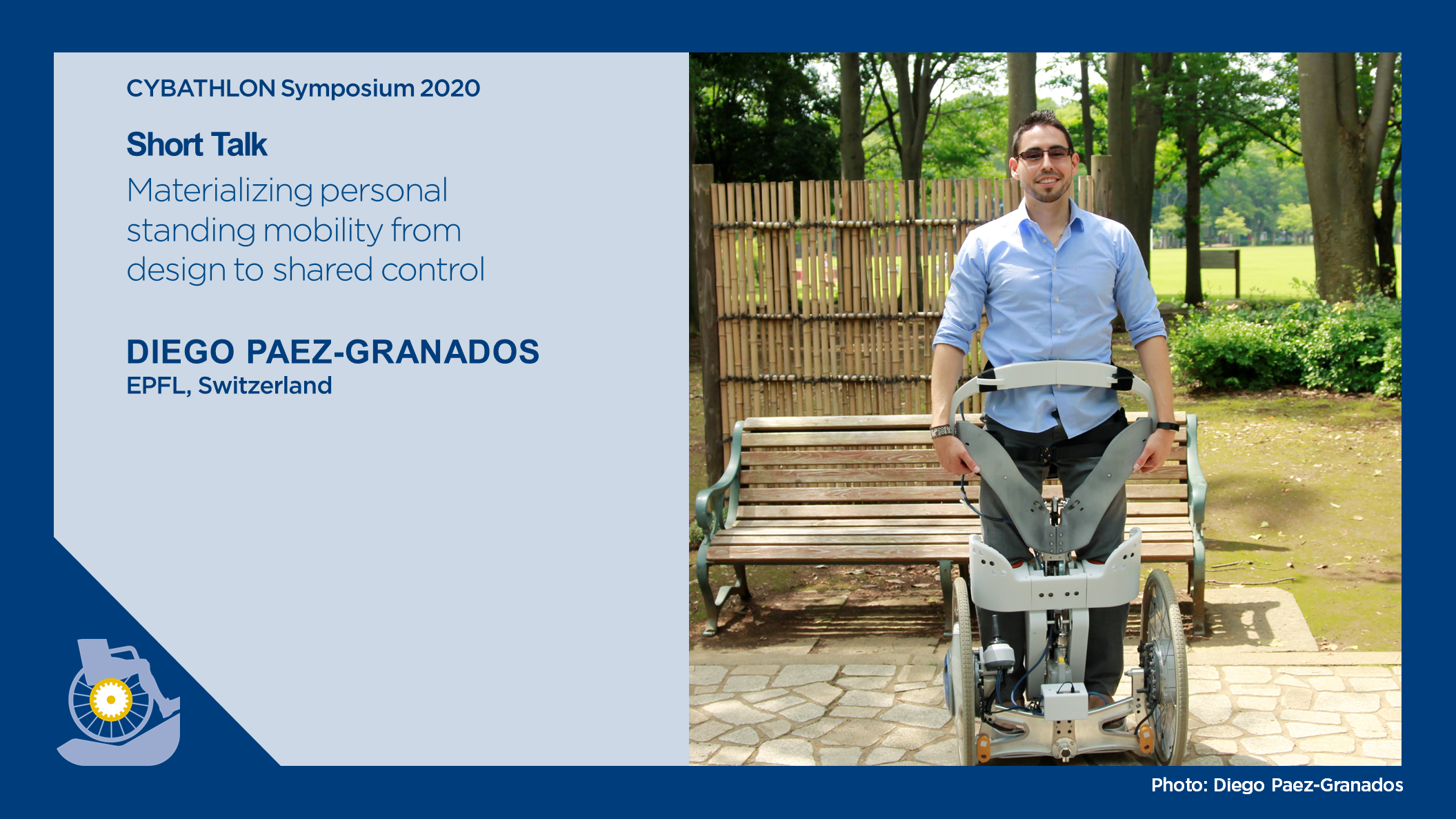This oral presentation was held at the Cybathlon Symposium 2020 (virtual).
Abstract
We introduce a unique intelligent system that relies on the centre of mass motions for conveying the user’s motion intention. The objective of this device is to achieve a standing mobility vehicle for users with lower body impairments, such as spinal cord injury (SCI) while allowing the usage of their remaining motion capabilities in the upper body for achieving standing and sitting transitions without the need for external power. The device relies on a smart mechanism that combines passive actuators (gas-spring) and natural body-postures for transition control through voluntary motions that synchronize trunk and lower-limbs [1,2]. Currently, the device has been successfully tested with healthy participants, allowing proof-of-concept [1,2]. Followed by clinical tests, where volunteers with complete SCI at different thoracic vertebrae level validated the device usability for the intended population. Furthermore, our standing mobility vehicle proposes fully hands-free locomotion for natural interaction with the surrounding environment. Accordingly, we developed a torso control interface for exploiting the natural motion of the upper body and the residual abilities of the user. Additionally, we investigate driving assistance for reducing the mental load of the user through shared control as low-level obstacle avoidance based on a dynamical system definition given by the user posture. Herewith, facilitating the navigation for complex situations such as crowded environments and narrow passages.
Details
- Title: Materializing Personal Standing Mobility from Design to Shared Control
- Authors: Paez-granados, D.; Billard, A.; & Suzuki, K.
- Date of publication: 18/09/2020
- View article

